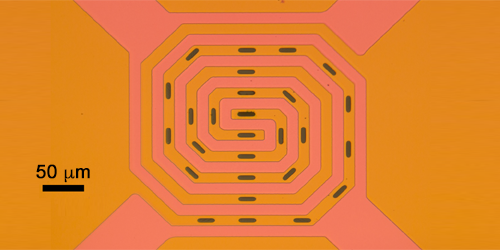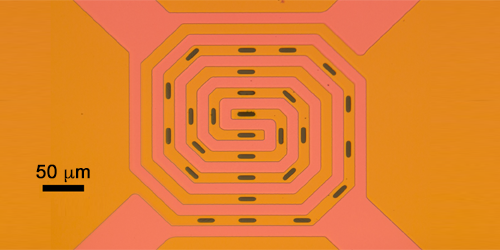Plasmon Thermometers for Silicon
Today’s silicon chips operate at ever increasing speed, but they also produce more waste heat than ever. To develop even faster processors, researchers need to reduce the heat that the chips produce. However, they don’t yet understand how heat propagates through the nanoscale components of a modern transistor. To do so, they would need to measure the temperatures across a device with nanometer resolution. Chris Regan of the University of California, Los Angeles, and co-workers have now developed a thermometry technique that, using a scanning transmission electron microscope (STEM), could eventually map temperature in a silicon device with a resolution down to 10 nm.
The technique measures temperature by using the STEM’s electron beam to create and characterize electron oscillations known as plasmons. Plasmons form when the beam causes a material’s valence electrons to oscillate with respect to the ions of its lattice. Since plasmon energies shift as silicon heats up and thermally expands, the temperature of silicon can be inferred by measuring the plasmon energy.
Regan’s group used this effect in a prototype thermometer based on silicon nanoparticles. The particles, deposited onto the surface of a chip, served as temperature probes. The researchers heated the nanoparticles to temperatures ranging from room temperature to and fired the electron beam at them. They then determined the plasmons’ energies by measuring the energy lost by the beam as it passed through the nanoparticles. Such measurements allowed them to establish the relationship between plasmon energy and nanoparticle temperature, thus calibrating their thermometer. The results suggest that the STEM beam could be used to scan an entire silicon device, obtaining a high-resolution map of the temperatures across the device.
This research is published in Physical Review Applied.
–Sophia Chen
Sophia Chen is a freelance writer based in Tucson, Arizona.





